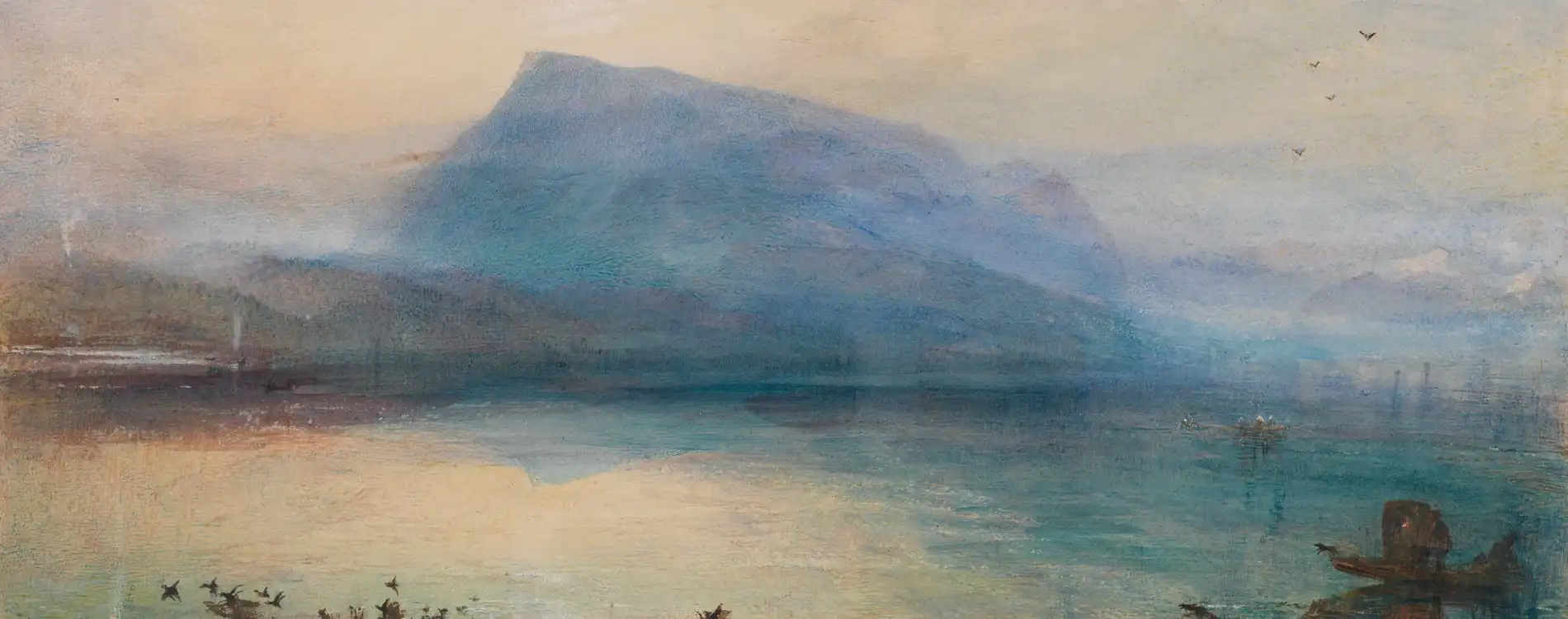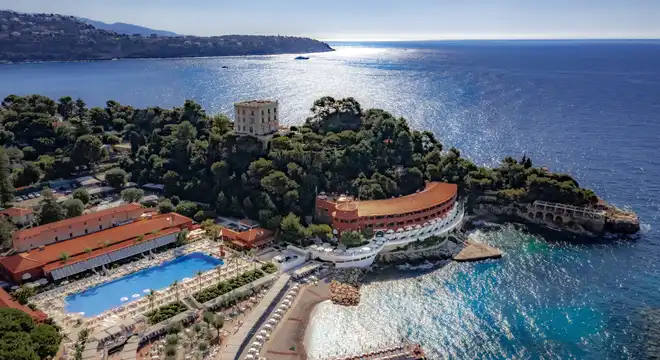Last year, the major exhibition dedicated to Claude Monet (1840-1926) at the Espace Ravel drew some 120,000 visitors. This time, the Grimaldi Forum Monaco is taking us even further back in the history of art and of those who laid the foundations of modernity by breaking away from academic rules with the light-filled canvases of Joseph Mallord William Turner (1775-1851). Following the exhibition devoted to him at the Musée National des Beaux-arts du Québec in 2021, the 80 or so paintings and works on paper brought together here under the curatorship of Elizabeth Brooke, General Curator and Project Manager at the Tate, are a reminder of the extent to which this English watercolour painter and printmaker made landscape painting a major genre, with his atmospheric effects enhanced with gold and silver.
So, whether we are looking at his radiant versions of the Venetian lagoon, the tormented clouds of his marine storms or the immensity of his skies and mountainous reliefs, Turner's touch takes us on a journey towards a conception of beauty that touches on the sublime. Faced with the landscape, its breaths and tumults, he released emotions that paved the way for the future Impressionists and even beyond. The special feature of this 2,000 m2 exhibition is that it opens up a rich dialogue with the works of modern and contemporary painters.
The Turner exhibition at the Grimaldi Forum
Dialogue between past and present
The exhibition "Turner, the sublime legacy" at the Grimaldi Forum Monaco explores Turner's lasting influence on contemporary art. By juxtaposing his works with those of modern and contemporary artists, the exhibition highlights the universal themes of nature and transformation, reflecting the way in which Turner's visions still resonate today. This approach highlights not only his artistic heritage, but also the constant evolution of artistic interpretation over the centuries.
Between man and the elements
The exhibition also looks at Turner's profound relationship with natural forces, a central theme in many of his paintings.
After an obscure prelude, like a preparation for the day, the exhibition opens with Turner's beginnings in the heart of the English landscape, a landscape that also fed the imagination of Richard Long, an emblematic figure of Land Art presented here through his 1979 Slate Circle . The route then climbs up into the mountains, sometimes majestic, sometimes avalanche-prone, and leads to 30 glacier photographs by the contemporary artist Ólafur Elíasson, who brings nature to life. It is then that human history opens up with mythological or biblical scenes such as Tobias and the angel, and the extreme clarity of Venice and its Doge's Palace, whose light ends up absorbing all the architecture in its mystique. That leaves these colours, these sensations, and the contemporary response of Howard Hodgkin, whose Venetian night views are filled with carborundum and black to the point of saturation.
Turner was also a painter of seas and storms, as evidenced by the famous Hurrah! for the whaler Erebus! of 1846. In the last years of this pioneer's life, the exhibition highlights what remains, the horizon and the straight lines separating areas of colour, which of course echo Rothko's work. Turner may have glorified the landscape genre, but he was also one of those painters of the industrial revolution who raised the question of the impact of human activity, a question that is obviously not new.
Who was J. W. Turner?
Joseph Mallord William Turner was an English painter and printmaker renowned for his watercolour landscapes and seascapes. Considered a precursor of Impressionism, Turner is famous for his exceptional use of light and colour, and for his dramatic compositions. His best-known works include Shipwreck of the Minotaur, Rain, Steam and Speed, and The Fighting Temeraire. The originality of his technique and his ability to capture moments of intense atmospheric emotion established his reputation as one of the great masters of British painting.
About the Grimaldi Forum in Monaco
The Grimaldi Forum Monaco is a congress and exhibition centre of international renown, inaugurated in 2000. This modern complex is a pillar of Monegasque culture, welcoming visitors from all over the world to enjoy a variety of events, congresses and shows throughout the year. The art exhibitions here are particularly noteworthy, having hosted retrospectives of artists such as Picasso, Dali and now J.W. Turner, adding to its prestige and cultural appeal.

